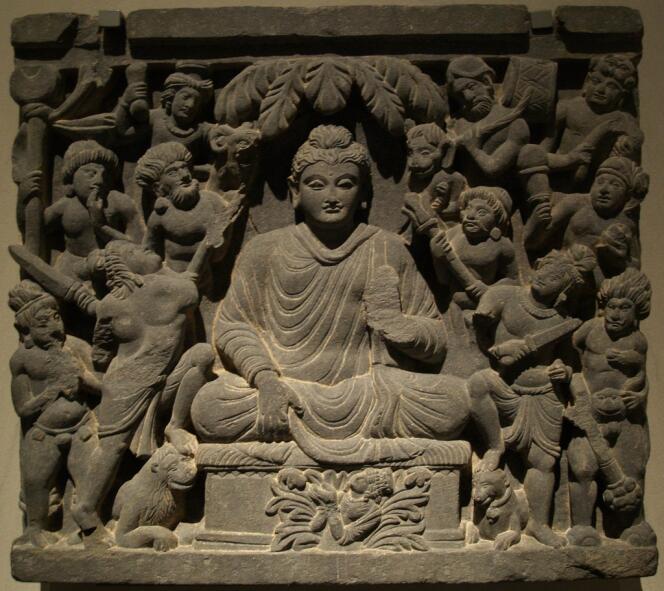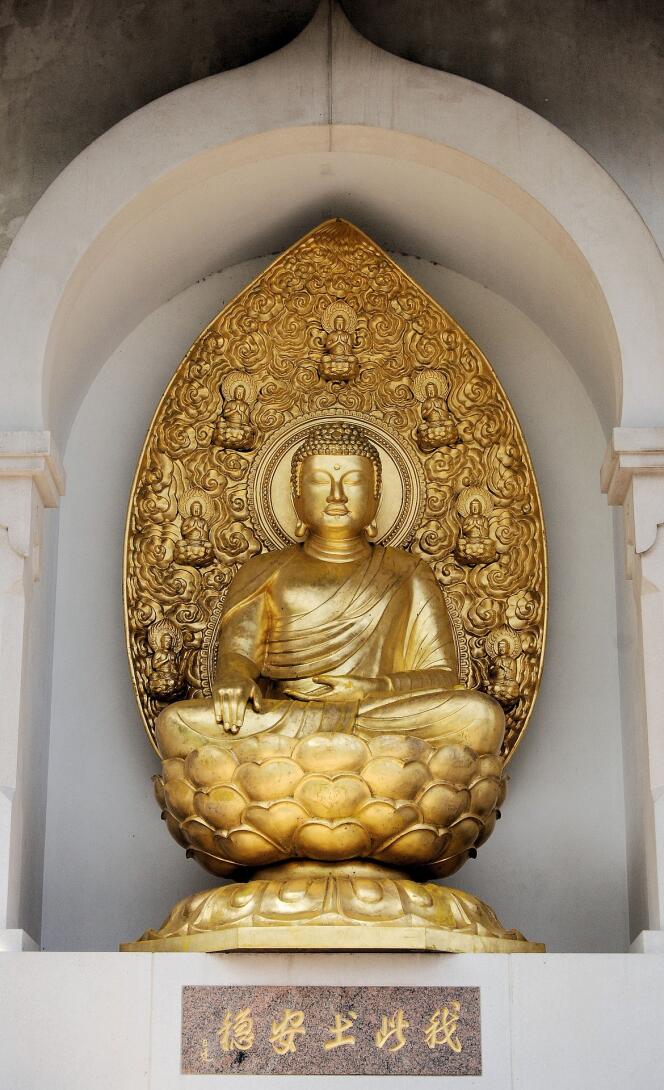Several common characteristics are found in carved or painted representations of Siddhartha Gautama, the historical founder of Buddhism. His birth, enlightenment and death (between the 5th and 6th centuries BCE) are commemorated for the Vesak holiday on Friday, May 5, the full moon day of the month, according to the resolution adopted by the United Nations, although many communities choose other dates.
Since when has Buddha been represented in artistic form?
Although Buddhism appeared in India in the 5th century before our era, the first representations of its founder are said to be "aniconic," i.e. Buddha was represented only in symbolic forms (wheel of the dharma, which symbolizes the Buddhist teaching, bowl or footprint). It was not until the 1st century of our era that the first "iconic" representations appeared in human form. At first, they appeared in India and northwest of India, then in Central and Eastern Asia.
The earliest and most remarkable sculptures come from Gandhara, an ancient region straddling Pakistan and eastern Afghanistan. Buddhist monks reached this region during the 2nd and 1st centuries before our era. Placed under the authority of Indo-Greek satraps (governors) after the conquests of Alexander the Great in the 4th century BCE, Gandhara then came under Kushan rule, an Indo-European dynasty of the 1st–3rd centuries BCE.

Local craftsmen, confronted with successive Persian, Hellenistic, Scythian and Indian influences, created a syncretic art, the art of Gandhara, and established the main characteristics of Buddhist iconography that still exist today.
Meditation and wisdom
The meditative posture is well known and refers to the one in which Siddhartha Gautama found himself on the day he attained enlightenment at the foot of a tree, thus freeing himself from the suffering caused by desire and ignorance, according to tradition. Having broken the cycle of reincarnations (samsara), he took the name of Buddha, "the enlightened one."
Buddha is also often represented with a halo on his head or behind his back, symbolizing the light that he radiates. His face is serious or smiling, with cheeks full and eyes half-closed. He expresses serenity and detachment, concentration and wisdom, as well as benevolence.

Hair, ears and hands
The protrusion of the hair at the top of the head, the ushnisha, is not a bun but a sign that the Buddha is endowed with supramundane knowledge. This sign is sometimes called the "protrusion of wisdom."
The urna, the small ball of hair protruding between the two eyes, symbolizes the third eye, that of awakening. In some sculptures, this cavity contains a crystal pearl, a symbol of radiant light.
You have 45.36% of this article left to read. The rest is for subscribers only.